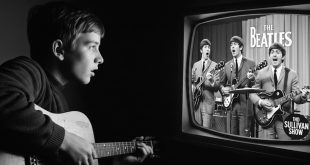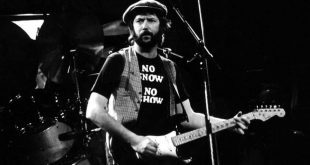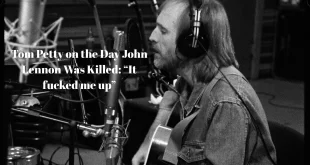John Lennon, the legendary musician and co-founder of the Beatles, tragically lost his life on December 8, 1980, when he was shot outside his apartment in New York City. The news of his untimely death shocked the world and left millions of fans grieving. However, what surprised many was the absence of a traditional funeral or memorial service to honor his life and legacy. In this blog post, we delve into the reasons why a funeral was not held for John Lennon and explore the alternative ways his fans and loved ones paid tribute to him.

The Aftermath of John Lennon’s Death
John Lennon’s murder sent shockwaves through the music industry and beyond. People from all walks of life mourned the loss of a visionary artist who had made an indelible impact on popular culture. Fans flocked to the site of his shooting, outside the Dakota apartment building, to pay their respects, leaving flowers, candles, and heartfelt messages.
Legal Challenges and Privacy Concerns
One of the primary reasons why a traditional funeral was not held for John Lennon was the legal challenges and privacy concerns surrounding his death. The investigation into Lennon’s murder was ongoing, and the police needed time to gather evidence and build a case against the perpetrator, Mark David Chapman. Holding a public funeral could have potentially interfered with the investigation and compromised the legal process.
Furthermore, the Lennon family, including his wife Yoko Ono and their son Sean, valued their privacy during this difficult time. They wanted to mourn and grieve in peace, away from the public eye. This desire for privacy likely played a role in the decision not to hold a public funeral or memorial service.
A Personal Approach: Cremation and Private Memorials
Instead of a public funeral, John Lennon’s body was cremated on December 10, 1980, just two days after his death. This decision allowed the family to keep the details of his final resting place private, protecting it from becoming a spectacle.
Following the cremation, the Lennon family held a private gathering to remember John and celebrate his life. This intimate memorial service allowed them to share their grief with close friends and family, away from the prying eyes of the media and the public.
Alternative Ways of Paying Tribute
Although a traditional funeral was not held for John Lennon, his fans found alternative ways to pay tribute to their beloved musician. The outpouring of love and respect for Lennon manifested in various forms, highlighting the enduring impact he had on people’s lives.
Vigils and Gatherings
In the days and weeks following Lennon’s death, fans organized vigils and gatherings in his honor. These events took place in cities around the world, with people coming together to remember Lennon’s music, ideals, and activism. From Central Park in New York City to Liverpool, his hometown, these gatherings allowed fans to find solace in each other’s company and celebrate Lennon’s life.
Musical Tributes and Concerts
Music, being the medium through which Lennon touched millions of lives, became a natural way for fans to express their grief and admiration. Artists from various genres paid tribute to Lennon through cover performances of his songs or by dedicating their own compositions to him.
One notable tribute concert was “The Concert for John Lennon” held at Madison Square Garden on October 2, 2001, marking what would have been Lennon’s 61st birthday. This star-studded event featured performances by renowned musicians like Paul McCartney, Eric Clapton, and Billy Joel, and served as a fitting tribute to Lennon’s musical legacy.
Artistic Expressions and Memorials
Artists and fans alike expressed their love for John Lennon through various artistic mediums. Paintings, sculptures, and graffiti depicting his likeness and spreading his message of peace and love emerged in cities worldwide. The Strawberry Fields memorial in New York’s Central Park, named after one of Lennon’s songs, became a gathering place for fans to remember him and reflect on his legacy.
The Beatles and Their Favorite Sports






One comment
Pingback: What Were John Lennon’s Last Words? – The Beatles